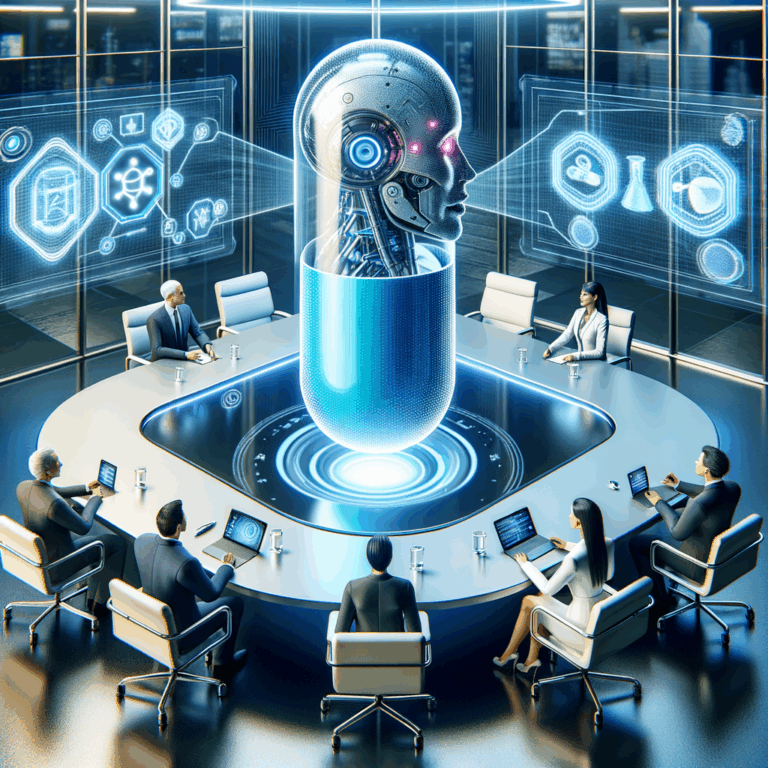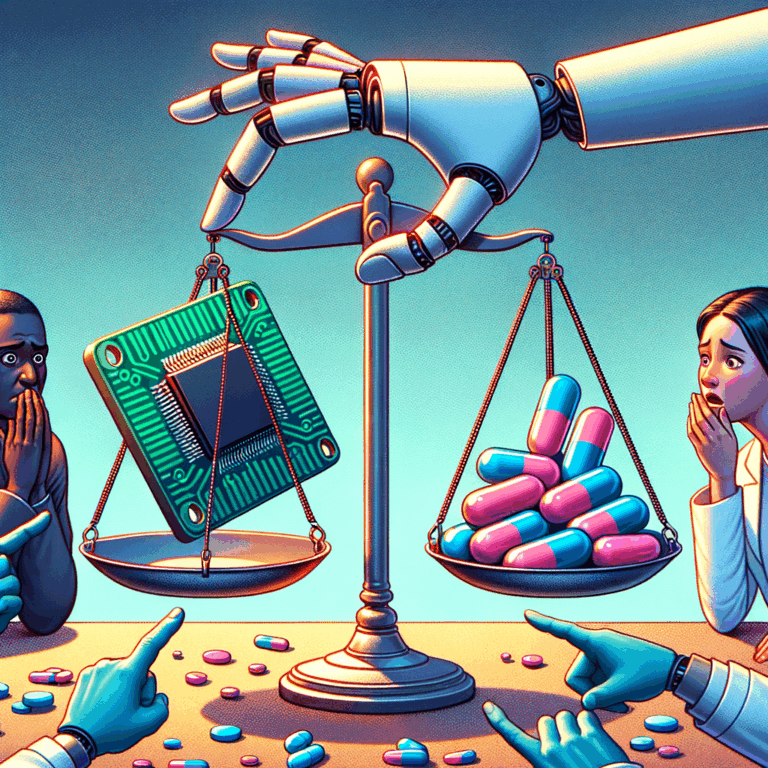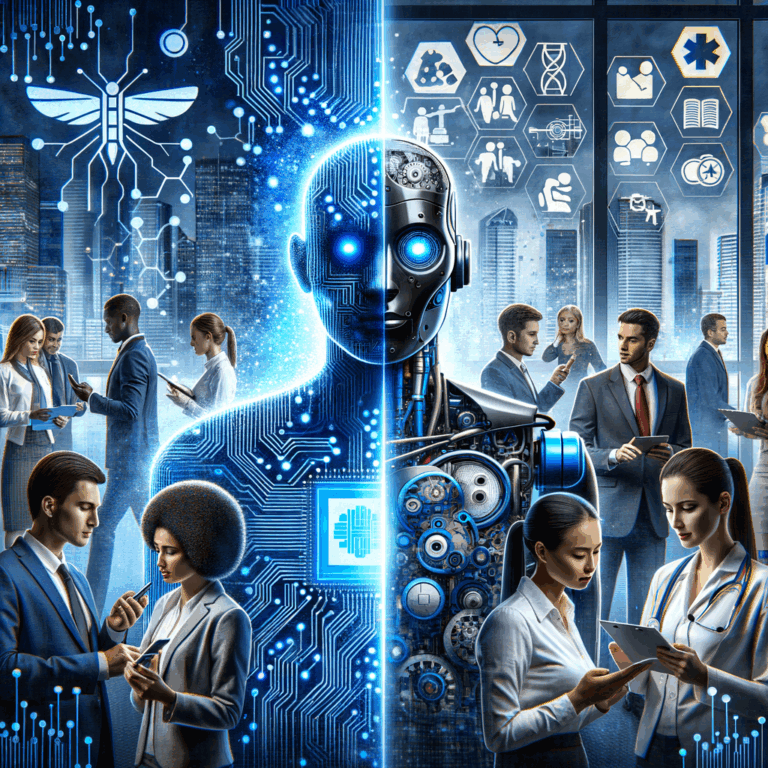The pharmaceutical industry stands at the precipice of its most consequential revolution since the advent of digital therapeutics. Across the sector, industry giants—are quietly but determinedly planning the replacement of traditional agency partnerships with AI-powered solutions. This seismic transformation is dismantling decades-old norms in medical communications, HEOR, and marketing, leaving traditional agencies scrambling to justify their existence in a rapidly evolving landscape where algorithms outperform human teams.
For MedComms, market access and marketing agencies, the stakes transcend mere obsolescence. AI now executes tasks from hyper-personalized content generation to predictive market access modelling with surgical precision—at speeds and scales no human team can match.
Stakeholders across the ecosystem face existential questions: Can KOLs trust algorithmically crafted scientific narratives? Will payers accept value dossiers shaped by machine learning? And crucially, what becomes of agencies clinging to billable-hour models in an era where AI delivers 80% of their outputs in 20% of the time? The answer lies not in resisting the tide, but in reinventing value—before pharma’s AI ambitions render traditional partnerships obsolete.
The Traditional Agency Landscape in Pharma
The pharmaceutical industry has long relied on a network of specialized agencies to navigate the complexities of drug development, marketing, and communication. These agencies, categorized into Medical Communications (MedComms), Health Economics and Outcomes Research (HEOR), and marketing, each play a distinct role in the pharmaceutical ecosystem. Their services are integral to the successful launch and maintenance of pharmaceutical products in the market.
Medical Communications (MedComms) Agencies:
MedComms agencies are responsible for creating and disseminating scientific content to various stakeholders, including healthcare professionals, patients, and regulatory bodies. Their expertise lies in translating complex scientific data into clear, accurate, and engaging content.
This includes clinical trial results, medical education materials, and regulatory submissions. MedComms agencies often employ scientists, medical writers, and designers who collaborate closely with clients to ensure compliance with regulatory standards and to communicate the value of pharmaceutical products effectively.
Health Economics and Outcomes Research (HEOR) Agencies:
HEOR agencies focus on demonstrating the economic and clinical value of pharmaceutical products to payers, insurers, and healthcare providers. Their work involves researching to show the cost-effectiveness, quality of life improvements, and budget impact of treatments.
HEOR agencies use advanced data analysis techniques to provide evidence that supports reimbursement decisions and market access strategies. Their role is crucial in an environment where cost containment is a priority for healthcare systems.
Marketing Agencies:
Pharmaceutical marketing agencies are responsible for promoting products to healthcare professionals and patients. They develop branding strategies, advertising campaigns, and digital marketing initiatives to raise awareness and drive engagement.
These agencies must navigate strict regulatory guidelines to ensure that promotional materials are accurate and not misleading. They also work closely with clients to understand the competitive landscape and to position products effectively in the market.
Value Proposition and Service Delivery Models:
The value proposition of these agencies lies in their specialized expertise and their ability to deliver high-quality, compliant content and research. MedComms agencies offer scientific acumen and regulatory knowledge, HEOR agencies provide data-driven insights, and marketing agencies bring creative and strategic thinking.
Their service delivery models often involve dedicated account teams that work closely with clients to understand their needs and deliver tailored solutions. Whether through project-based work or ongoing partnerships, these agencies aim to provide value that justifies their fees.
Time and Materials Pricing Structure:
The traditional pricing model for these agencies is based on time and materials, where clients are billed for the hours worked by agency staff plus any additional costs incurred. This model can be advantageous for clients who need flexibility and are comfortable with variable costs.
However, it can also lead to budget overruns if projects are not well-scoped or managed. In an era where clients are increasingly demanding measurable outcomes, this pricing structure is being scrutinized for its alignment with the value delivered.
Client-Agency Relationship Dynamics:
The relationship between clients and agencies in the pharmaceutical industry is typically collaborative and often long-term. Agencies strive to become trusted partners, offering strategic advice and operational support. Client-agency dynamics are built on trust, mutual understanding, and a shared goal of bringing effective treatments to patients.
However, the rise of new technologies and changing market demands is putting pressure on these relationships. Clients are expecting more transparency, accountability and innovation from their agency partners, challenging the traditional ways of working.

AI Capabilities Disrupting Agency Functions
The pharmaceutical agency ecosystem is being rewired by AI’s ability to replicate—and often surpass—human performance in four mission-critical domains, fundamentally altering cost structures and value chains. Human-in-the-loop is still needed but not as much as previously.
1. Hyper-Efficient Content Generation
Foundation AI models now produce regulatory-grade scientific content indistinguishable from human output. These systems ingest clinical trial data, peer-reviewed literature, and regulatory guidelines to autonomously draft complex materials: CSRs (clinical study reports), medical information responses, and value dossiers.
Unlike human writers constrained by working memory, AI cross-references thousands of documents in real time, ensuring narrative consistency across geographies and therapeutic areas. The breakthrough lies in context-aware generation—algorithms that adapt tone for HCPs (technical precision) versus payers (cost-benefit framing) while maintaining compliance guardrails.
2. Predictive Insight Extraction
AI’s capacity to analyze unstructured data streams—social media chatter, payer meeting transcripts, competitor pipeline disclosures—has rendered traditional manual market research obsolete. Systems now identify emerging KOL influence networks 6-8 months before human analysts, predict formulary rejection risks by modelling payer decision patterns, and simulate launch pricing scenarios using real-world adherence data. Crucially, these models uncover latent connections (e.g., between adverse event trends and prescribing behaviours) that evade conventional hypothesis-driven approaches.
3. Automated Regulatory Safeguards
AI-powered compliance engines now audit medical content with sub-atomic precision. These systems map narratives against evolving FDA/EMA guidelines, flagging subtle discrepancies in safety data presentation or off-label implications. In market access, algorithms auto-validate HEOR models against ISPOR (International Society for Pharmacoeconomics and Outcomes Research) standards, ensuring methodological rigor. The true disruption lies in pre-emptive correction—AI doesn’t just spot errors but suggests compliant alternatives, reducing iterative review cycles from weeks to hours.
4. Precision-Tuned Medical Accuracy
Advanced retrieval-augmented generation (RAG) architectures anchor AI outputs to verified sources—clinicaltrials.gov entries, drug monographs, treatment guidelines—eliminating hallucination risks.
In MedComms, models cross-check generated content against the client’s product-specific lexicon, ensuring terminology alignment. For HEOR, AI validates economic assumptions against regional healthcare expenditure databases. This creates a closed-loop system where every AI-generated insight is traceable to authoritative evidence, meeting pharmacovigilance and transparency mandates.
The implications are irreversible: Agencies relying on manual literature reviews, iterative content editing, or reactive compliance checks face existential margin erosion. AI doesn’t just automate tasks—it redefines what “expertise” means, shifting competitive advantage to those who master hybrid human-AI workflows.

The Death of the Billable Hour: Business Model Disruption
The pharmaceutical agency ecosystem’s century-old economic engine—the billable hour—is imploding under AI’s relentless efficiency. Time-based pricing, predicated on labour-as-commodity, collapses when AI executes core agency functions (literature reviews, content generation, regulatory checks) at 90%+ speed/cost advantages. Clients now recognize the absurdity of paying for 40 human hours when algorithms deliver superior outputs in 40 minutes. This creates an existential paradox: agencies must deliver more strategic value at lower margins while retraining clients to pay for outcomes, not effort.
The shift from hourly rates to value-based models exposes agencies’ historical inefficiencies. Clients no longer tolerate vague deliverables masked by timesheets; they demand guaranteed impact metrics—share-of-voice growth, formulary inclusion rates, HCP engagement lift. This forces agencies to fundamentally restructure compensation around risk-sharing frameworks: performance-linked fees tied to pre-defined KPIs, milestone-based retainers, or equity stakes in product launches.
Emerging compensation models reveal three evolutionary pathways:
1. AI-as-a-Service Subscriptions: Clients pay for access to proprietary AI platforms (content generators, predictive analytics engines) with usage-based pricing, decoupling costs from human involvement.
2. Strategic Outcome Units: Bundled offerings combining AI-executed tactical work with high-touch advisory services, priced per business outcome (e.g., $X per 1% market share gain).
3. Compliance Warrants: Contingency fees where agencies guarantee regulatory approval or payer acceptance, monetizing AI’s precision in navigating complex submission landscapes.
The disruption’s ultimate irony? Agencies that fully embrace AI gain negotiating power—but only if they abandon hourly billing and rebrand as architects of ROI certainty. The survivors will be those who leverage AI’s speed to focus on irreplicable human strengths: cultivating KOL networks, decoding untapped patient insights, and orchestrating global evidence strategies no algorithm can replicate.
How to Begin to Plan an Agency Transformation
1. Conducting an AI-Readiness Assessment
The foundation of successful transformation lies in a rigorous, multi-dimensional evaluation of an agency’s current operational DNA. This goes beyond surface-level tech audits to dissect workflow architectures, decision-making hierarchies, and knowledge management systems.
The critical examination focuses on three core pillars: data liquidity (structured/unstructured assets across therapeutic domains), process modularity (identifying tasks ripe for automation versus those requiring human judgment), and cultural permeability (leadership alignment and staff adaptability). The assessment must map existing competencies against emerging AI capabilities in scientific reasoning, predictive analytics, and regulatory navigation—identifying capability gaps that could derail adoption. Crucially, it evaluates compliance infrastructure readiness for AI outputs, ensuring validation protocols meet MHRA/FDA standards for algorithmically generated content.
2. Developing Agency-Specific AI Integration Strategy
True integration demands bespoke strategies reflecting an agency’s unique value chain anatomy.
Creative agencies may focus on multimodal content generation systems that preserve brand narratives across 50+ regional regulatory landscapes. The strategy must balance short-term automation wins (automated literature surveillance, slide deck generation) with long-term capability building (predictive KOL engagement modelling, AI-driven publication planning).
Critical success factors include phased implementation schedules that preserve client service continuity while progressively transferring 30-70% of tactical workloads to AI systems over 18-36 months.
3. Reimagining Service Offerings and Team Structures
Survival demands radical service portfolio reinvention. Traditional deliverables become AI-powered product lines: subscription-based evidence monitoring, self-service regulatory content generators, or predictive market access simulators.
Team architectures shift from functional silos to fluid AI/human hybrid pods—medical writers evolve into AI content directors, account leads become therapeutic-area data strategists.
The new talent matrix prioritizes three competencies: AI orchestration (directing machine outputs), insight curation (transforming data into strategic narratives), and stakeholder alchemy (translating AI capabilities into client value propositions). Crucially, leadership roles emerge focused solely on AI ethics governance and algorithmic accountability.
4. Building AI Capabilities and Partnerships
Sustainable AI adoption requires building three interdependent capability stacks:
- Core AI Infrastructure: Proprietary therapeutic knowledge graphs integrating clinical trial data, real-world evidence, and competitive intelligence
- Hybrid Workflow Engines: Seamless human-AI collaboration frameworks ensuring compliance traceability and strategic oversight
Continuous Learning Systems: Feedback loops where client interactions and regulatory outcomes perpetually refine AI models
Strategic partnerships transition from vendor relationships to symbiotic ecosystems—co-developing regulatory-approved AI validation frameworks with health authorities, collaborating with academic institutions on domain-specific language models, and joint-venturing with health tech firms on predictive engagement platforms.
5. Creating New Pricing and Business Models
The post-AI business architecture demands value-capture mechanisms aligned with transformed client expectations. Performance-based retainers tie fees to measurable outcomes—market access acceleration metrics, HCP engagement lift, or formulary inclusion rates.
Subscription models offer tiered access to AI-powered insight engines, with premium tiers providing predictive scenario modelling. Risk-sharing constructs emerge where agencies invest AI resources in exchange for success-based compensation, particularly in high-stakes areas like first-to-market launch strategies.
Eularis’ Approach to Guiding Agency Transformation
The proven methodology centres on three transformative axes:
- A detailed financial analysis of where inefficiencies are in the agency current system that could be augmented by AI, and how many new AI-powered service offerings are required to build revenue by a specific $ amount – and specifically where the pharma unmet needs are that would fit well with the agencies core human value proposition that would be significantly augmented with AI in a unique way.
- Capability Liquidation & Reinvestment: Systematically identifying legacy services for AI replacement while redirecting resources to proprietary strategic offerings and quantifying the financial impact
- Client Value Re-engineering: Co-creating AI-enhanced service bundles that demonstrably impact clients’ commercial objectives through controlled pilot programs
- Ethical AI Governance: Implementing auditable AI oversight frameworks that maintain scientific integrity while delivering efficiency gains
- Quick win identification as well as longer-term strategic differentiators.
AI vendor identification for the quick wins and build metrics for the longer term strategic differentiators.
This approach transforms agencies into AI-powered market accelerators—preserving human expertise for high-value strategic interventions while leveraging machines for industrial-scale execution.
The end-state: agile organizations where AI handles 80% of tactical workloads, freeing human talent to focus on creating market-moving strategies no algorithm could conceive.

Future Outlook
In the upcoming years, the pharmaceutical agency landscape will transition from a model cantered on manual execution to one defined by digital agility and refined strategic analytics.
Agencies will increasingly integrate advanced, data-driven frameworks into their operations to respond nimbly to evolving regulatory, market, and technological pressures. This evolution will steer agencies away from legacy silo-based structures towards collaborative, cross-functional ecosystems that blend adaptive digital processes with robust scientific and commercial insights.
As legacy operational models give way to dynamic digital platforms, agencies will need to realign their service delivery to cater to a marketplace that demands faster, more precise and strategic problem-solving over routine task execution.
New Specialized Roles Emerging for Agencies
The human talent stack will radically reconfigure around three irreplaceable competencies:
- AI Behaviour Architects: Experts in designing machine learning systems that mirror therapeutic area-specific clinical reasoning patterns while maintaining regulatory compliance.
- Evidence Orchestrators: Professionals who curate and connect real-world data streams, clinical trial insights, and commercial intelligence into unified AI-interpretable knowledge graphs.
Ethical Compliance Contortionists: Specialists navigating the evolving landscape of AI governance in life sciences, ensuring algorithm outputs meet both current regulations and anticipatory ethical standards.
These roles will demand hybrid expertise—equal parts clinical acumen, data science proficiency and regulatory foresight—creating a talent war for professionals who can bridge AI capabilities with pharmaceutical domain mastery.
Client-Agency Partnership Models of the Future
Traditional vendor relationships will give way to algorithmic co-creation partnerships. Clients will grant agencies unprecedented access to proprietary data lakes in exchange for AI models trained exclusively on their therapeutic portfolios. Performance agreements will incorporate neural liability clauses—shared risk/reward structures where agencies assume partial accountability for AI-generated strategies’ commercial outcomes.
The most advanced partnerships will feature integrated command centers where client medical, commercial and regulatory teams collaborate directly with agency AI systems, enabling real-time strategy optimization across the product lifecycle.
Trust will be rebuilt through blockchain-verified AI audit trails, providing complete transparency into how machine-generated recommendations align with scientific evidence and compliance requirements.
The Window of Opportunity for Transformation
The next five years present a critical inflection point—a window within which agencies must decisively pivot their operational and strategic frameworks to safeguard long-term relevancy. This transformation is driven by an accelerating pace of technological change and the urgent necessity to realign traditional service models with modern, data-centric demands.
First movers currently building proprietary AI infrastructure and retraining workforces will establish unassailable market positions through three key advantages:
- Predictive Intelligence Moats: Accumulated therapeutic-area data and refined algorithms that outpace competitors’ capabilities.
- Regulatory AI Certification: Early adoption of quality management systems meeting emerging FDA/EMA standards for AI-generated medical content.
Hybrid Talent Pipelines: Established pathways for cultivating the rare professionals who can simultaneously command molecular pathway expertise and machine learning architecture.
Late adopters will find themselves trapped in a value erosion spiral—overpaying for third-party AI tools while losing premium clients to competitors offering integrated human-machine solutions. The transformation window closes when payers and regulators begin mandating AI-enhanced evidence packages as standard, permanently altering industry expectations for speed, precision, and commercial impact.
Conclusion
Pharmaceutical agencies must act decisively to reinvent their value proposition in an AI-driven ecosystem. Leaders must prioritize three imperatives: conduct rigorous capability audits to identify automation-ready functions, rebuild talent pipelines around AI-augmented strategic consulting, and pioneer outcome-based pricing models aligned with measurable commercial impact.
The transformation window is narrowing rapidly—agencies delaying structural overhaul risk permanent marginalization as clients consolidate partnerships with AI-empowered innovators.
Eularis accelerates this transition through proprietary frameworks that transform agencies into AI-native enterprises, blending regulatory-grade compliance protocols with predictive commercial engines. Ultimately, survival hinges on embracing AI not as a cost-cutting tool, but as a catalyst for reimagining service architectures—where human expertise directs algorithmic precision to solve pharma’s most complex challenges. The future belongs to those who recognize that AI’s greatest value lies not in replacing human ingenuity, but in amplifying it at unprecedented scale.
Found this article interesting?
1. Follow Dr Andrée Bates LinkedIn Profile Now
Revolutionize your team’s AI solution vendor choice process and unlock unparalleled efficiency and save millions on poor AI vendor choices that are not meeting your needs! Stop wasting precious time sifting through countless vendors and gain instant access to a curated list of top-tier companies, expertly vetted by leading pharma AI experts.
Every year, we rigorously interview thousands of AI companies that tackle pharma challenges head-on. Our comprehensive evaluations cover whether the solution delivers what is needed, their client results, their AI sophistication, cost-benefit ratio, demos, and more. We provide an exclusive, dynamic database, updated weekly, brimming with the best AI vendors for every business unit and challenge. Plus, our cutting-edge AI technology makes searching it by business unit, challenge, vendors or demo videos and information a breeze.
- Discover vendors delivering out-of-the-box AI solutions tailored to your needs.
- Identify the best of the best effortlessly.
Anticipate results with confidence.
Transform your AI strategy with our expertly curated vendors that walk the talk, and stay ahead in the fast-paced world of pharma AI!
Get on the wait list to access this today. Click here.
4. Take our FREE AI for Pharma Assessment
This assessment will score your current leveraging of AI against industry best practice benchmarks, and you’ll receive a report outlining what 4 key areas you can improve on to be successful in transforming your organization or business unit.
Plus receive a free link to our webinar ‘AI in Pharma: Don’t be Left Behind’. Link to assessment here
5. Learn more about AI in Pharma in your own time
We have created an in-depth on-demand training about AI specifically for pharma that translate it into easy understanding of AI and how to apply it in all the different pharma business units — Click here to find out more.

